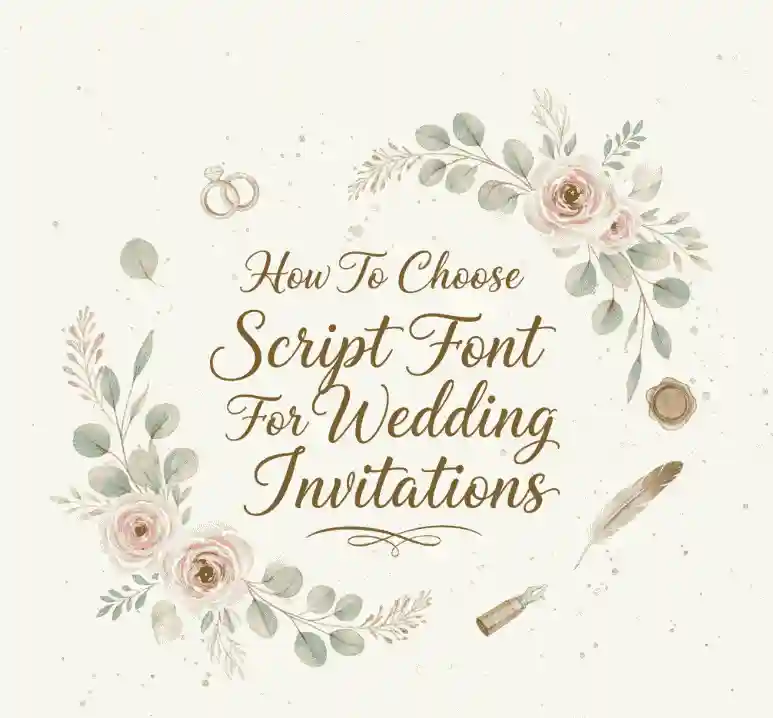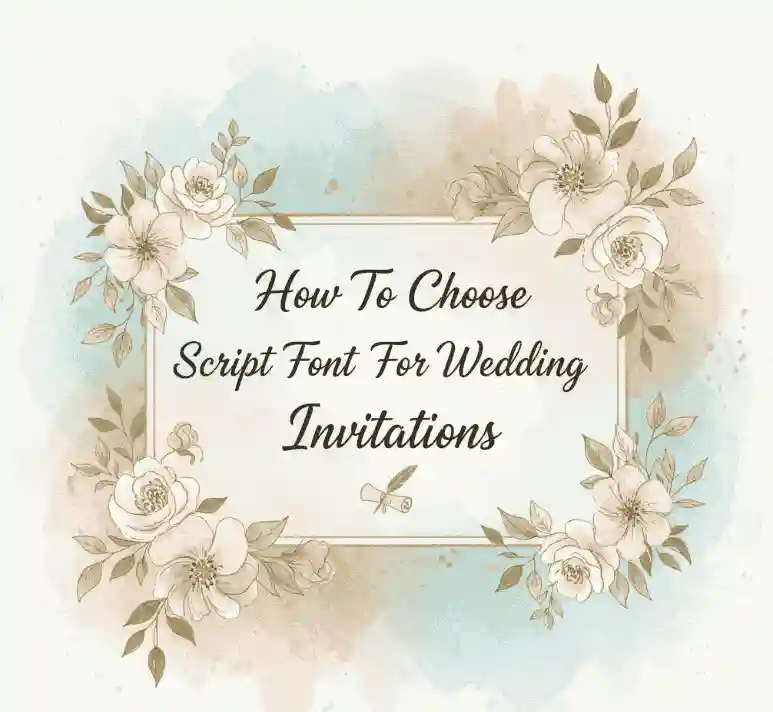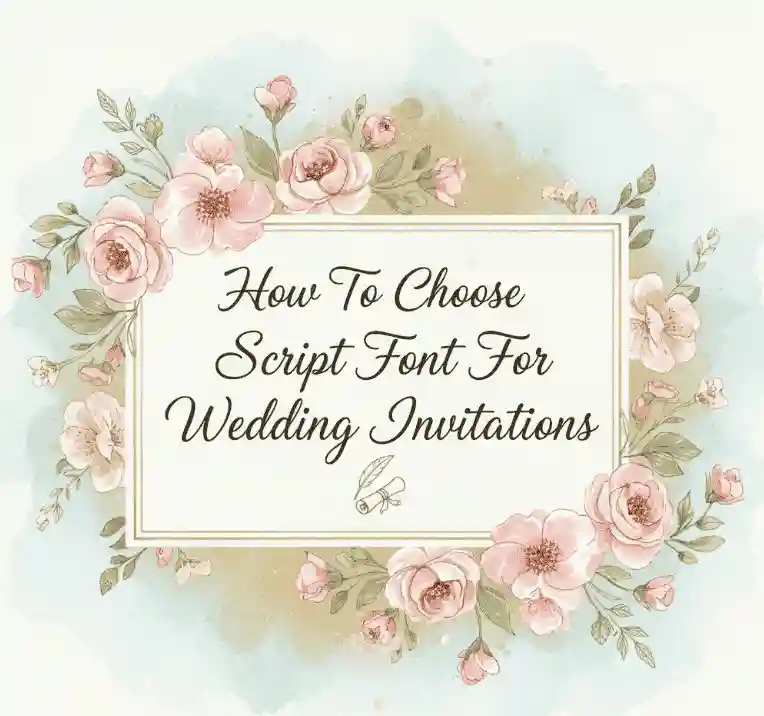How To Choose Script Font For Wedding Invitations
Table of Contents
- Introduction
- Why Script Fonts Are a Favorite for Wedding Invitations
- Key Factors in Choosing a Script Font
3.1 Readability & Legibility
3.2 Matching Style & Theme
3.3 Flourishes, Spacing & Size
3.4 Pairing Script With Complementary Fonts
3.5 Printing Medium & Contrast - Step-by-Step Guide to Choosing Script Fonts
- Recommended Script Fonts from NoahType
- Common Mistakes to Avoid
- Conclusion
- References

1. Introduction
Your wedding invitation is more than just a piece of paper — it’s the first glimpse guests will have of your special day. Fonts play a central role in shaping this impression. Among them, script fonts stand out as timeless choices that convey romance, elegance, and sophistication.
But not every script font is created equal. Choosing the right one requires a balance of readability, style, and harmony with your wedding’s overall theme. This guide will walk you through how to choose script font for wedding invitations with confidence.
2. Why Script Fonts Are a Favorite for Wedding Invitations
Script fonts mimic handwriting and calligraphy, making them perfect for wedding stationery. They are:
- Romantic & emotional — conveying elegance and intimacy.
- Visually impactful — great for highlighting names or headings.
- Versatile — ranging from modern brush styles to formal calligraphy.
Their charm lies in personality, but they must be carefully chosen to ensure both beauty and clarity.
3. Key Factors in Choosing a Script Font
3.1 Readability & Legibility
Not all script fonts read well at small sizes. Choose fonts with balanced strokes and avoid overly ornate swashes for important details like names and dates. Always print test samples before finalizing.
3.2 Matching Style & Theme
Align your font with your wedding theme:
- Romantic & classic → refined calligraphy like Soraya Lovely Font
- Modern minimal → clean styles such as Social Niceties
- Rustic garden → brush scripts like Baseliner Script Font
3.3 Flourishes, Spacing & Size
Swashes and flourishes should enhance design, not clutter it. Adjust kerning and spacing so the text remains elegant but readable.
3.4 Pairing Script With Complementary Fonts
Limit to two fonts: one decorative script + one clean serif/sans serif. For instance:
- Pair Special Night Calligraphy Font with a minimal sans serif for event details.
- Use a font duo like Beautiful Good Font Duo that already combines script and sans.
3.5 Printing Medium & Contrast
Fine script lines may fade on textured paper. Ensure color contrast is high enough — e.g., gold script on ivory paper is luxurious but must still be legible.

4. Step-by-Step Guide to Choosing Script Fonts
- Define your wedding theme (classic, boho, modern, rustic).
- Collect inspiration samples and shortlist 3–5 script fonts.
- Test them using your actual text (names, date, venue).
- Pair each with a complementary serif/sans serif.
- Print mockups in the real paper stock and size.
- Get feedback from friends and family.
- Finalize with proper spacing and layout adjustments.
5. Recommended Script Fonts from NoahType
Here are handpicked fonts from NoahType that work beautifully for wedding invitations:
- Alkahestic Font — Modern calligraphy script with flowing elegance.
- Special Night Calligraphy Font — Romantic, with alternates & swashes perfect for invitations.
- Soraya Lovely Font — A soft, romantic script that adds timeless charm.
- One Only Font — A personal and intimate calligraphy font for heartfelt designs.
- Mix Match Calligraphy Font — Packed with ligatures and alternates for decorative use.
- Scattergun Font — Feminine modern calligraphy with stylish strokes.
- Beautiful Good Font Duo — Script + sans serif combo, perfect for effortless pairing.
- Queen California Font Duo — Elegant duo with versatile design potential.
Each of these fonts offers a unique aesthetic, making it easy to match them with your specific wedding theme.
6. Common Mistakes to Avoid
- Overusing script fonts in every element.
- Choosing overly ornate scripts for small text.
- Forgetting to adjust kerning and spacing.
- Skipping print tests and only relying on digital preview.
- Using three or more clashing fonts.
7. Conclusion
Choosing the right script font for wedding invitations is both an art and a science. By balancing readability, aesthetics, and theme coherence, you’ll set the perfect tone for your special day.
With NoahType’s curated collection of calligraphy and script fonts, you can find the ideal style to reflect your wedding vision — whether modern, classic, romantic, or rustic.

